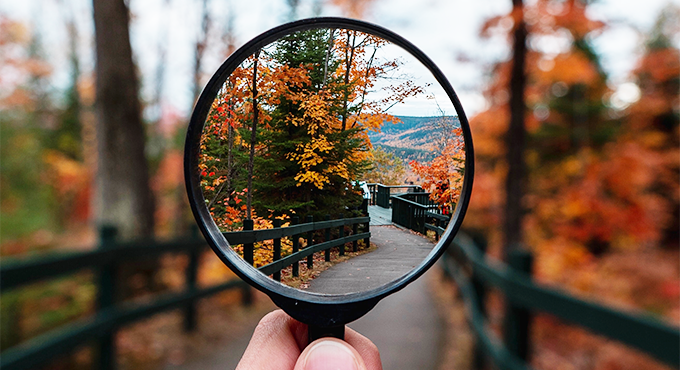 News
News 
Culture and sport: the “Olympic season” in French museums
Sport is often opposed to culture, and athletes to artists, like if they belonged to two irreconcilable worlds. At least, the Paris Olympic and Paralympic Games 2024 show that this opposition doesn’t need to be. Here’s a review of all exhibitions in France putting the spotlights on sport with the French ministry of culture.
As the French ministry of culture puts, many temporary exhibitions “explore the sport trend in all its aspects”. Whether you are in Paris or other regions, you can enjoy all sports, and especially if they relate to Olympic Games (but not only) are under the spotlights. The “Olympic season” is already hung on the picture rails of the best French museums!
History and review
Our first exhibition, Olympisme, une histoire du monde (Olympism, a history of the world), accessible until 8 September at the Palais de la Porte Dorée, offers a look back on the history of modern Olympic Games since 1896. The major steps of the 33 modern Olympic Games are shown with “iconic objects, posters, medals and sport gears” to dive in “a century of Olympic games and social and political struggles that shaped the Games and their time”. Visitors discover the feats of the best Olympic athletes in addition to special events that made the history of this sport event, and even general history. This original exhibition offers theatre, dance, cinema, workshops and meetings, but with sport “up on the headline”.
In the Louvre Museums, an additional exhibition called L’Olympisme, une invention moderne, un héritage antique (Olympism, a modern invention, an ancient heritage), open until 16 September, presents the creation of modern Games and how they stem from ancient history and how they moved away from this model. For the third organisation of the Paris Olympic Games in 2024, the Louvre museum explain its choices: to offer visitors a way to “discover the creation of the first Olympic Games and its iconographic sources in the late 19th century, understand its political context and understand how organisers wanted to reinvent the competitions of Ancient Greece”. To be noted that the French school in Athens, first French institution settled in Greece, is a partner of the Louvre to organise this exhibition.
And history is also at the heart of the exhibition Cent ans de Jeux Olympiques en France (A hundred years of Olympic Games in France), an exhibition made by the Archives nationales accessible until 27 September that presents the different Games organised in France. This exhibition is accessible at the Domaine national du Palais-Royal, but also on various cities in the Île-de-France region, and presents more than a century of reception of Olympic Games. The aim of this exhibition is to showcase the five editions of the Games in France: Paris 1900 and 1924, Chamonix 1924, Grenoble 1968 and Albertville-Tignes 1992. Several highlights are planned, with “iconographic documents made with models of the athletes’ villages and objects which belonged to the champions of yesterday and today”.
Fashion, design and sport
In addition to historical reviews, more original subjects in relation with sport are also available. The first is La mode en mouvement #2 (Moving Fashion #2), accessible until 5 January 2025 at the Palais Galliera, the museum of fashion of the City of Paris. This exhibition chose to present, through very rich collections of the museum, “a history of fashion from the 18th century until today” by developing more specifically “the transversal subject of the moving body”. According to the museum, this exhibition (the second of its kind) is designed for visitors “to understand the place of clothing in the practice of physical activities and sports and the social consequences of their change”. Clothes designed for sport (horse riding, tennis, golf, bike riding and others) is put in relation with the urban cloakroom, and special focused is put to beach clothing “which reveals pieces rarely shown to the public”.
The Musée du Luxembourg (in the Luxemburg gardens in Paris) offers until 11 August the exhibition Match - Design & sport, une histoire tournée vers le futur (Match - Design & sport, a history turned towards the future). According to organisers “sport and design have always been mirrors to each other, and feed one another”. Indeed, the design “plays a critical role for the history of sport and increases athletic capacities”. The exhibition presented thus talks about “the role of design in the progress of sport, the relations that are drawn between the two worlds and the prospects of change”. A way to explore how “the world of sport never ceases to inspire great designers, and vice versa, in industries such as automobile or ready-made clothes”.
Roaming and inclusiveness
Although most of the exhibitions are held in Paris, other regions still offer exhibition cycles organised everywhere in France by “Frac” (regional funds for contemporary art). Called Art & Sport, this original mechanism puts the Frac “at the time of Olympism” and is designed by a grouping of national museums to “shed a different light on contemporary art”. This cycle of exhibitions started in 6 April in the city of Nevers (in the Burgundy-Franche-Comté region), where the first 13 exhibitions of the mechanism put in mirror “pieces from collections of regional funds of contemporary art with the sport facilities that welcome them”. As the designer of this exhibition cycle explains, “the 13 regions of implementation of the Frac match 13 sports: dance, car sport, hiking, horse riding, etc., but also 13 different contexts”. These exhibitions, which are “true homage to diversity”, are accessible in Paris, but also Sin-le-Noble (Hauts-de-France region), Grenoble, Le Mans, Marseille, Mulhouse, Nevers, Nimes, Pau, Saint-Brieuc, Saint-Lô, Sartène (Corsica) and Tours.
The most original and inclusive is without a doubt the exhibition organised at the Pantheon, celebrating a subject barely put under the spotlights: Paralympism. It is called Histoires paralympiques. De l’intégration sportive à l’inclusion sociale (1948-2024) (Paralympic histories. From sport integration to social inclusion (1948-2024), and is open until 29 September “to shed the light on the history of this fight for emancipation and equality”. As the Pantheon curators explain, the Paralympic Games appeared in mid-19th century and “experienced a significant boom and shook our perception of handicapped persons”. So the exhibition talks about “those who, through their role in the Paralympic movement, managed to write history funded on being proud of differences and claiming a more inclusive society”. The exhibition is also an echo “to the great men and great women who lie in the Pantheon and deserved the country’s appreciation through their civic engagement or their defence of republican values, and especially Louis Braille, the inventor of the tactile writing”. Archives, posters, pictures, sports gear, objects and audiovisual documents highlight both “the gradual integration process of athletes with various disabilities”, but also the “change of the narrative, images and gear in relation with competitions”.





Comments
You must be logged in to leave a comment. Log in